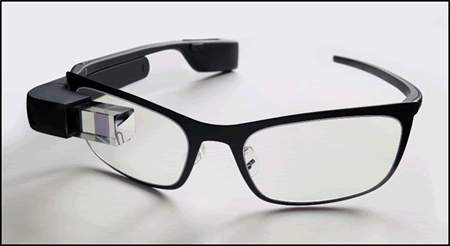Consumer Electronics: Has Innovation Peaked?
John MacWilliams wonders if, with the evolutions and revolutions we’ve seen over the last few years in consumer electronics, has innovation peaked?

The consumer electronics industry (CE) has gone from also-ran to shining star – and back to a more subdued posture unless some exciting things happen by this fall.
The transition goes like this: CE becomes a low-cost, almost entirely Asian manufacturing market led by Sony. Blockbuster products emerge and transform CE into the electronics industry leader as far as volume goes. Some examples are:
- LCD technology combined with HDTV sets a new standard for CE (and is still unfolding)
- Tablets and smartphones become the rage, reaching unprecedented levels of growth
- Video game boxes by Microsoft and Sony evolve to near-virtual reality
- USB, HDMI, and LCD interconnects lead a re-emergence of CE connector applications
As these products took off in the marketplace, Apple re-emerged from the ashes to reshape the industry in dramatic fashion, while Samsung rose up to challenge Sony and, in many respects, take the lead in CE products. Cross-industry disruptive technologies, for the first time, caused declines in PC sales; CE growth is aided by USB and HDMI standards; and now USB 3.0 supports 4.8Gb/s while HDMI 2.0 supports 16Gb/s over existing qualified connectors.
Was this period a flash in the pan? What’s next?
There are interesting scenarios. Apple seems to have gone quiet. Well, not really, because behind the scenes Apple surely has several game-changers in development…or do they? Is it possible that the industry is in for an extended period of lower growth – brought on by shrinking possibilities, as some on Wall Street believe – because all the conceivable killer apps have already been invented? Or is the CE industry poised for a new wave of blockbuster products?
Here are some of the possibilities:
4K/2K ultra-high definition TV is already here, but it could create new LCDTV and video entertainment growth. Issues for consideration with this scenario include:
- Dramatic UHD resolution will make you want to sit closer to see all the detail.
- The LCD industry, with its multi-billion-dollar manufacturing plants, needs a new growth engine.
- It would spur new opportunities for connector products including HDMI 2.0.
- Users have recently upgraded to large-screen LCDs and may not want to reinvest so soon.
- Bandwidth is an issue, but locally HDMI 2.0 is ready with existing connectors.
- Currently, there are few UHDTV programs, but 1080p can be upscaled to near-UHDTV resolution.

Wearable electronics are a natural evolution for mobile electronics. Some of the considerations here include the following:
- It already exists with Google Glass, Bluetooth ear buds, fitness devices, smart watches, and medical devices.
- GPS transceivers will be particularly helpful with small children.
- The medical device industry is ripe for wearable applications tied to smartphone apps.
- Do wearables take the digital revolution too far, however?
- For the connector industry, this technology is mostly chips with very limited connector applications.
Next-generation smartphones and tablets are still evolving and we don’t know for sure what they will be. Here are a few guesses:
- Obviously larger screens, but that has limited value as a wearable handheld device
- Merger of some tablets with PCs (already started but the jury is still out)
- Lots of Bluetooth keyboards
- Built-in solar charging for an always-on device
- Curvilinear and flexible OLED screens
- Transportation applications
- A significant uptake in vertical market applications
Next-generation video game boxes could provide:
- Powerful CPUs rivaling the best workstations
- Virtual reality
- Intricate games that emphasize science, technology, and problem-solving
Automotive electronics consumer applications will be key, as projections indicate that in 10 years, electronics will account for 50% of car value. What will all those applications be? Most likely next-generation automotive technologies will include:
- Satellite communications
- GPS-related apps
- Smartphone/tablet apps
- Weather radar
- Driverless vehicles
- Infrastructure for PHEV/EV
What consumer electronics applications do you think we’ll see in the next five years? Do you have a dream device you hope someone will manufacture? Leave your comments below to let us know.
John MacWilliams, Market Director, Bishop & Associates, Inc.
- Electric Vehicles Move into the Mainstream with New EV Battery Technologies - September 7, 2021
- The Dynamic Server Market Reflects Ongoing Innovation in Computing - June 1, 2021
- The Electronics Industry Starts to Ease Out of China - November 3, 2020





